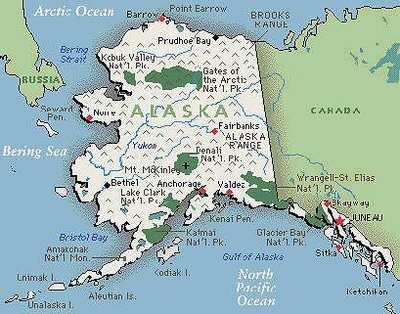GE Demonstrates Integral Role Of Third-Party Procedure
Designers In U.S. Airspace Modernization
 The first public-use Required Navigation Performance (RNP)
procedure in Alaska was deployed by GE Aviation’s PBN
Services Thursday at Deadhorse. The optimized instrument approach
procedures will increase schedule reliability into Deadhorse while
reducing fuel burn, CO2 emissions and flight time. GE’s
timely deployment of beneficial RNP procedures underscores the
value of third-party navigation procedure designers to the U.S.
airspace modernization effort.
The first public-use Required Navigation Performance (RNP)
procedure in Alaska was deployed by GE Aviation’s PBN
Services Thursday at Deadhorse. The optimized instrument approach
procedures will increase schedule reliability into Deadhorse while
reducing fuel burn, CO2 emissions and flight time. GE’s
timely deployment of beneficial RNP procedures underscores the
value of third-party navigation procedure designers to the U.S.
airspace modernization effort.
“The rapid publication of the Deadhorse RNP procedure
illustrates GE’s ability to work with the FAA and to employ
advanced technology to deliver airspace modernization benefits
today,” said Steve Forte, PBN Services general manager.
“GE is ready to utilize its resources to deliver RNP programs
that yield both economic and environmental benefits for airline
operations in the U.S.”
The Deadhorse procedures became available for public use just
four months after GE submitted documentation to the FAA for
processing, transmittal and publication. Last August, with the
publication of an RNP instrument approach at Bradley Intl. Airport
at Windsor Locks, Conn., GE became the first commercial third-party
to deploy a public instrument flight procedure in the U.S.
Deadhorse is located more than 200 miles north of the Arctic
Circle and is an important staging point for personnel and
equipment bound for Alaska’s Prudhoe Bay and North Slope oil
operations. The airport has approximately 189 arrivals per week,
including commercial service, air taxi, and general aviation
operations. However, due to inclement Arctic weather, it’s
not uncommon for ground-based navigation aids to go out of service
causing flight delays and cancellations.

The RNP procedures, which will save qualified operators up to
four track miles compared to existing RNAV arrival procedures,
allow the use of onboard technology to follow a precise path,
independent of aging ground-based navigation beacons. When the
ground-based system is out of service, the Deadhorse RNP procedures
will enable qualified aircraft to land during low visibility
weather conditions that previously would have prevented them from
landing – on average, 26 days a year.
RNP procedures, an advanced form of Performance-based
Navigation, can be deployed at any airport, allowing aircraft to
fly very precise paths with an accuracy of less than a wingspan.
This precision allows pilots to land the aircraft in weather
conditions that would otherwise require them to hold, divert to
another airport, or even cancel the flight before departure. In
addition, since the procedures are very precise, they can be
designed to shorten the distance an aircraft has to fly en-route,
and to reduce fuel burn, exhaust emissions and noise pollution in
communities near airports. Because of RNP’s precision and
reliability, the technology can help air traffic controllers reduce
flight delays and alleviate air traffic congestion.
 ANN's Daily Aero-Linx (05.02.24)
ANN's Daily Aero-Linx (05.02.24) ANN's Daily Aero-Term (05.02.24): Touchdown Zone Lighting
ANN's Daily Aero-Term (05.02.24): Touchdown Zone Lighting Aero-News: Quote of the Day (05.02.24)
Aero-News: Quote of the Day (05.02.24) ANN FAQ: Contributing To Aero-TV
ANN FAQ: Contributing To Aero-TV NTSB Final Report: Cirrus Design Corp SR20
NTSB Final Report: Cirrus Design Corp SR20




